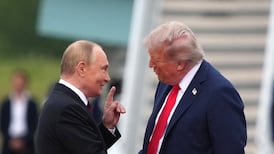China needs to promote innovation in the military to help upgrade and modernise, President Xi Jinping told the country’s annual parliament, and there should be better integration between the armed forces and civilians.
As chairman of the Central Military Commission, Mr Xi is head of the People’s Liberation Army as well as general secretary of the Communist Party of China and president.
“We must have a greater sense of urgency to push for sci-tech innovation and advancement with greater determination and efforts . . . to support the People’s Liberation Army,” Mr Xi told the congress, cited by the Xinhua news agency.
China has the world’s second biggest defence budget after the US, but earlier at the congress, Premier Li Keqiang announced the country would increase military spending by 7 per cent this year, its slowest pace in a decade, but which the government believes is enough to protect “rights and interests”.
This slowing of defence spending was read as a sign that China was not going to engage in an arms race with the US, which has ramped up defence spending under Donald Trump.
China’s military build-up is strongly focused on naval capability to help support its territorial ambitions in the South China Sea, which have earned it the ire of the international community and especially neighbouring countries which contest its claims in the maritime region.
“We must have a greater sense of urgency to push for science and technology innovation and advancement with greater determination and efforts,” Mr Xi said.
Wide-ranging modernisation
He is implementing a wide-ranging modernisation of China’s armed forces, which is the world’s largest standing army, with 2.3 million personnel. He has said in the past that the military needs to be about “winning wars” and becoming more “loyal, clean and responsible”.
In 2015, Mr Xi said China would cut 300,000 personnel from the military.
Last week, China introduced into service its new generation J-20 stealth fighter, which it hopes will help narrow the gap with the United States.
The warplane is designed to go head to head with its US rivals, although military experts do not believe the Chinese fighter can match the radar-evading properties of the Lockheed Martin F-22 Raptor air-to-air combat jet, which the J-20 noticeably resembles, or the Lockheed F-35 strike jet.
Senior military figures say China’s priorities are to build a “first class” navy and develop a marine corps.
Mr Xi said training for military personnel must be improved.
“Efforts to improve the training system of military personnel should also be strengthened to foster a large number of high-quality military talent,” he said.
There needed to be “enhanced top-level design and strategic planning in promoting military-civilian integration in national defence technology and military equipment, and strengthening military and civilian cooperation in training high-quality military personnel,” Mr Xi said.
This meant that civil technologies should better serve military purposes, and defence technologies should be adapted and applied for civil use.











